As the towers for the new Gordie Howe International Bridge rise from the ground, murals that share the history of the lands on which the bridge is being constructed, and tell a few of the many stories about the culture and diversity of the region. will be on display.
Four artists from Walpole Island First Nation and Caldwell First Nation were selected to create murals for display at the Canadian bridge site as part of the project Community Benefits Plan, which identifies opportunities for Indigenous Peoples in Canada.
An artist from Southwest Detroit was also engaged to create complementary artwork on the US bridge site which honours the Mexican heritage of the neighbourhood.
Each image is displayed on panels that are affixed to the tower crane climbing systems – temporary steel structures used to provide access for workers involved with the construction of the two massive towers which will support the bridge.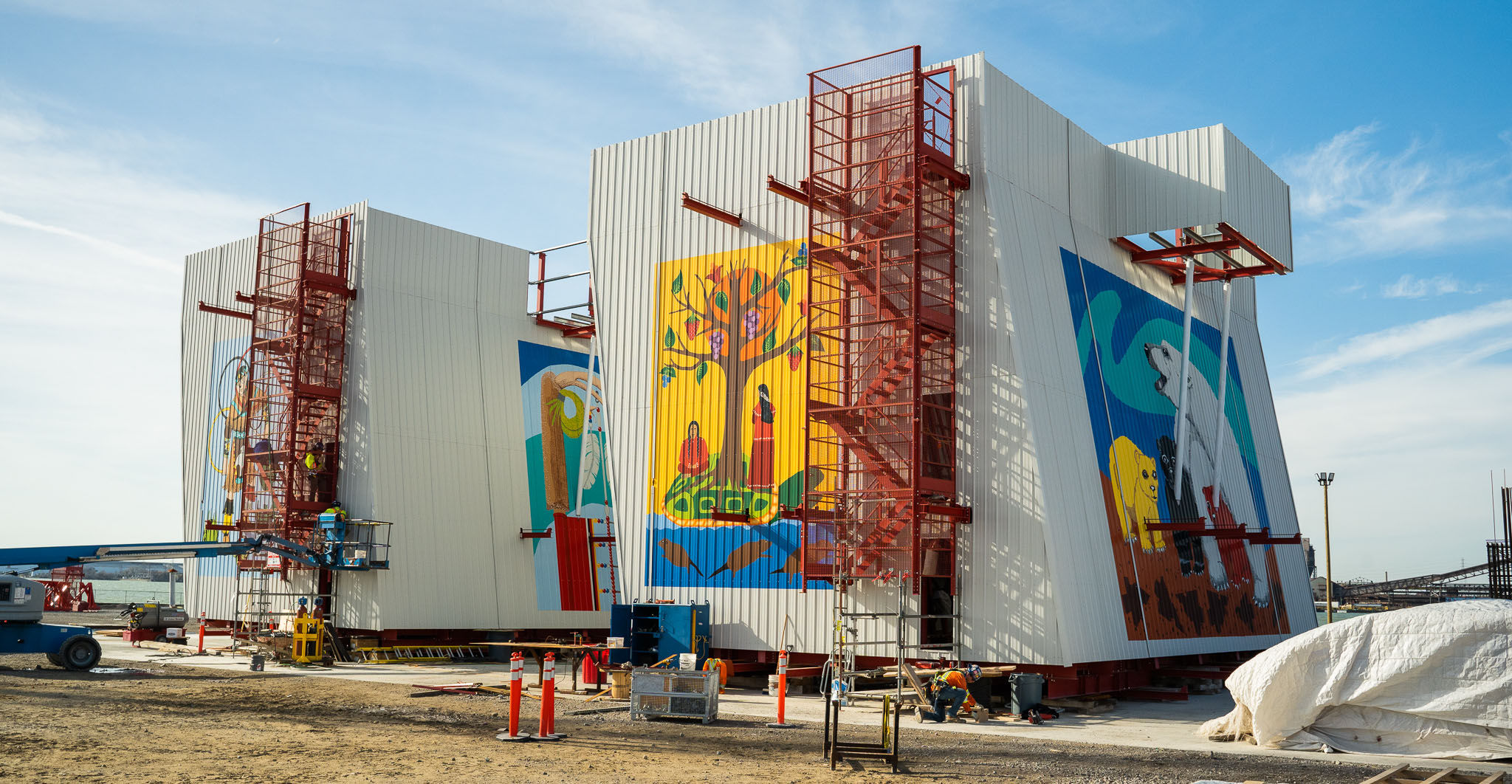 There are four art pieces on the US side and six pieces on the Canadian side of varying sizes. The largest art piece measures 15 metres/49 feet by 12 metres/39 feet.
There are four art pieces on the US side and six pieces on the Canadian side of varying sizes. The largest art piece measures 15 metres/49 feet by 12 metres/39 feet.
As the tower cranes are extended to their ultimate height of 250 metres/822 feet, so will the murals, making them visible from land on both sides of the border and from the Detroit River.
First Nations inspiration
Walpole Island resident Paul White was selected as the Project Co-ordinator for the Canadian side and he enlisted the help of well-known Walpole Island First Nation artist, Teresa Altiman, as well as two young artists, Daisy White from Walpole Island First Nation and Naomi Peters from Caldwell First Nation.
White says when the group started talking about their designs in June, they developed a strong relationship.
“Each artist had a hand in their own work and developed pieces that related to each other. It was a great collaboration,” says White.
In addition to painting the Maple Leaf – a symbol synonymous with Canada – the four artists also designed images of bears, an eagle, a hoop dancer, and the creation story of Turtle Island.
“We were asked to create an image of a bear to represent the determination in the bridge project,” says White. “We collaborated with each other and we decided to draw four bears in our sacred colours – white, black, red and yellow.”
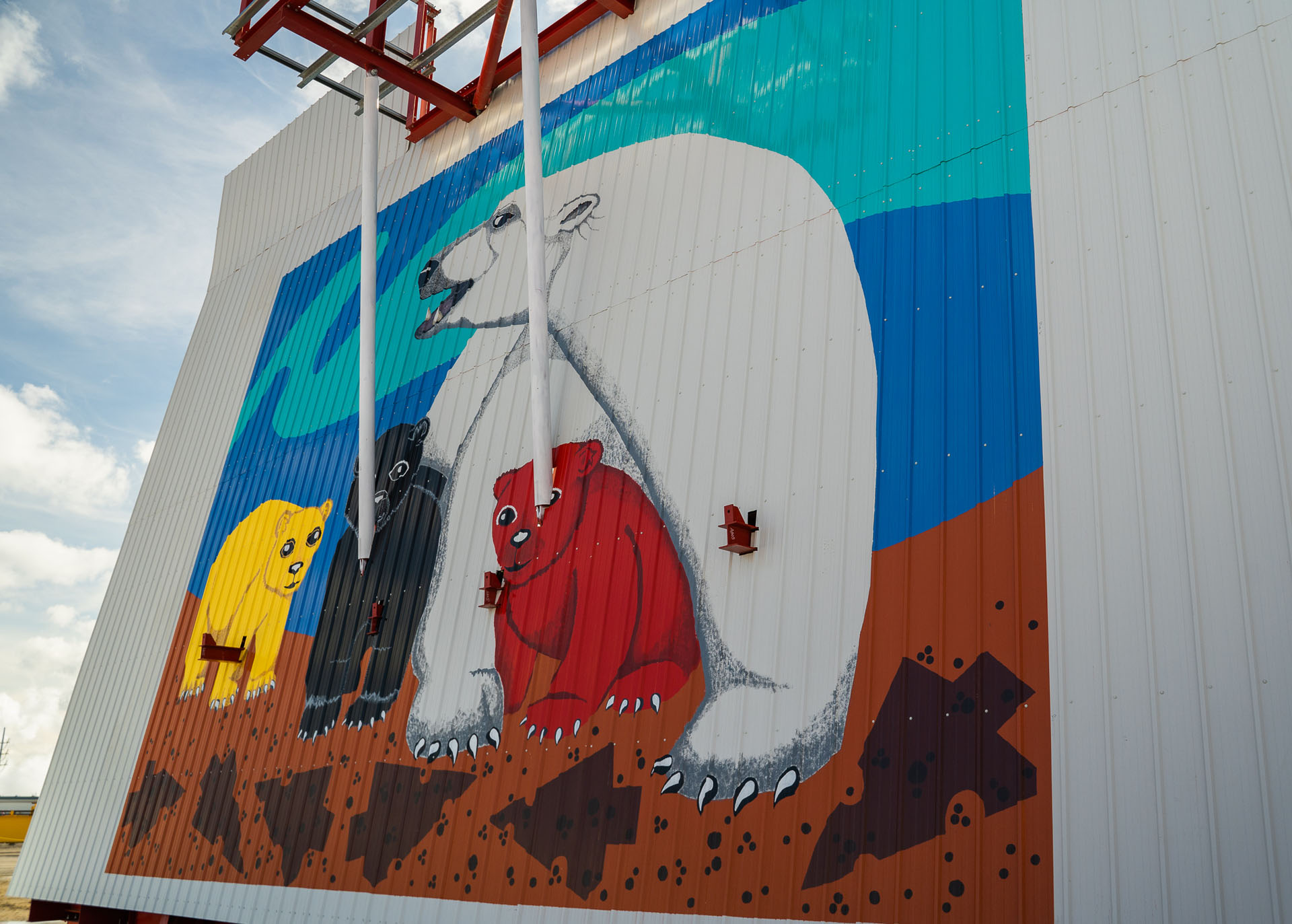 Bears are greatly respected for their strength, courage, and spiritual power in Indigenous cultures.
Bears are greatly respected for their strength, courage, and spiritual power in Indigenous cultures.
Below the bears are images of arrowheads, which also have an important meaning for First Nations peoples.
“Those arrowheads represent our ancestors who have travelled and walked this land before us,” says Altiman. “It is very important that the arrowheads are there because we always need to recognize our ancestors.”
Altiman is a graduate of the Ontario College of Art and Design in Toronto and was awarded an honourary fellowship from the school in 1986.
Her design includes the image of an eagle head. First Nations peoples in Canada believe that eagles communicate directly with the Creator, and eagles, and specifically their feathers, are highly revered by Indigenous peoples in Canada.
“This is the piece that I created because the bridge team wanted an image that displayed integrity,” states Altiman, who also added an eagle staff to the painting, a symbol she calls sacred to the people of Walpole Island.
Peters, 24, says she worked on 12 different sketches involving First Nations dancers before deciding on a hoop dancer that represents her Pottawatomi and Chippewa culture. The image includes four hoops in the sacred colours – yellow, black, red, and white -- as well as four traditional medicines.
Peters says she included sage, sweet grass, cedar, and tobacco as they play an important role in First Nations culture and are used by different tribes in prayer, smudging and purifying ceremonies.
“I like how the design turned out because it feels alive with the movement of the dancer,” says Peters. “I really hope people will fall in love with the beauty of our dances and our culture.”
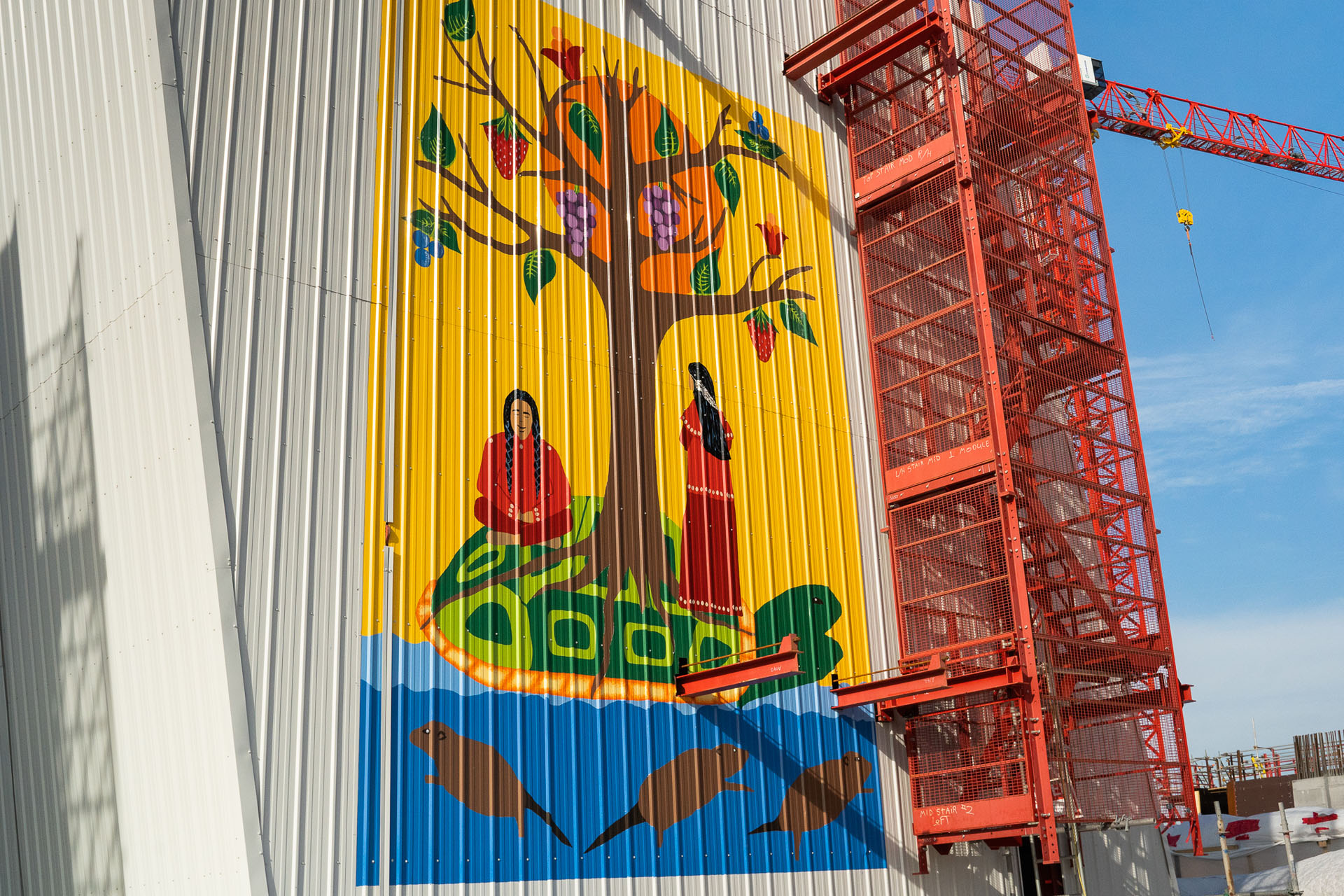
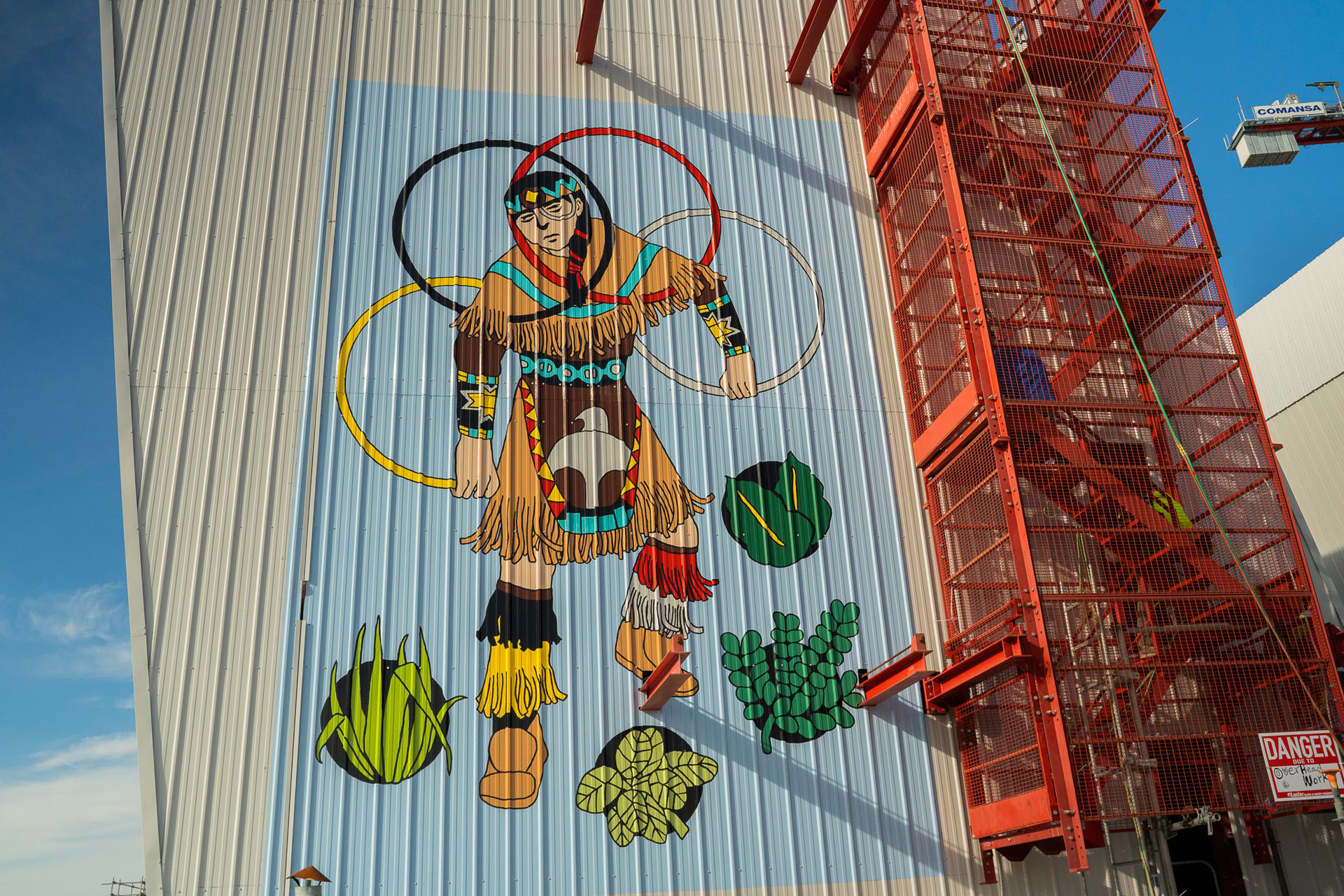
Daisy White, who at 17 years old, is the youngest artist on the project, based her design on the First Peoples’ creation story.
It includes a tree on the shell of a turtle, to represent Turtle Island, as well as muskrats – which in the story play the role of the “earthdiver” and the only animal to succeed at diving to the ocean floor to bring up earth for the Creator to make land.
“The fruit and the flowers on the tree symbolize life and strength,” says White, who also included images of two people dressed in red garments in honour of missing and murdered Indigenous women and girls in Canada.
“I am very proud of the design,” proclaims White. “I am excited to see the reactions of people.”
The Spirit of Detroit
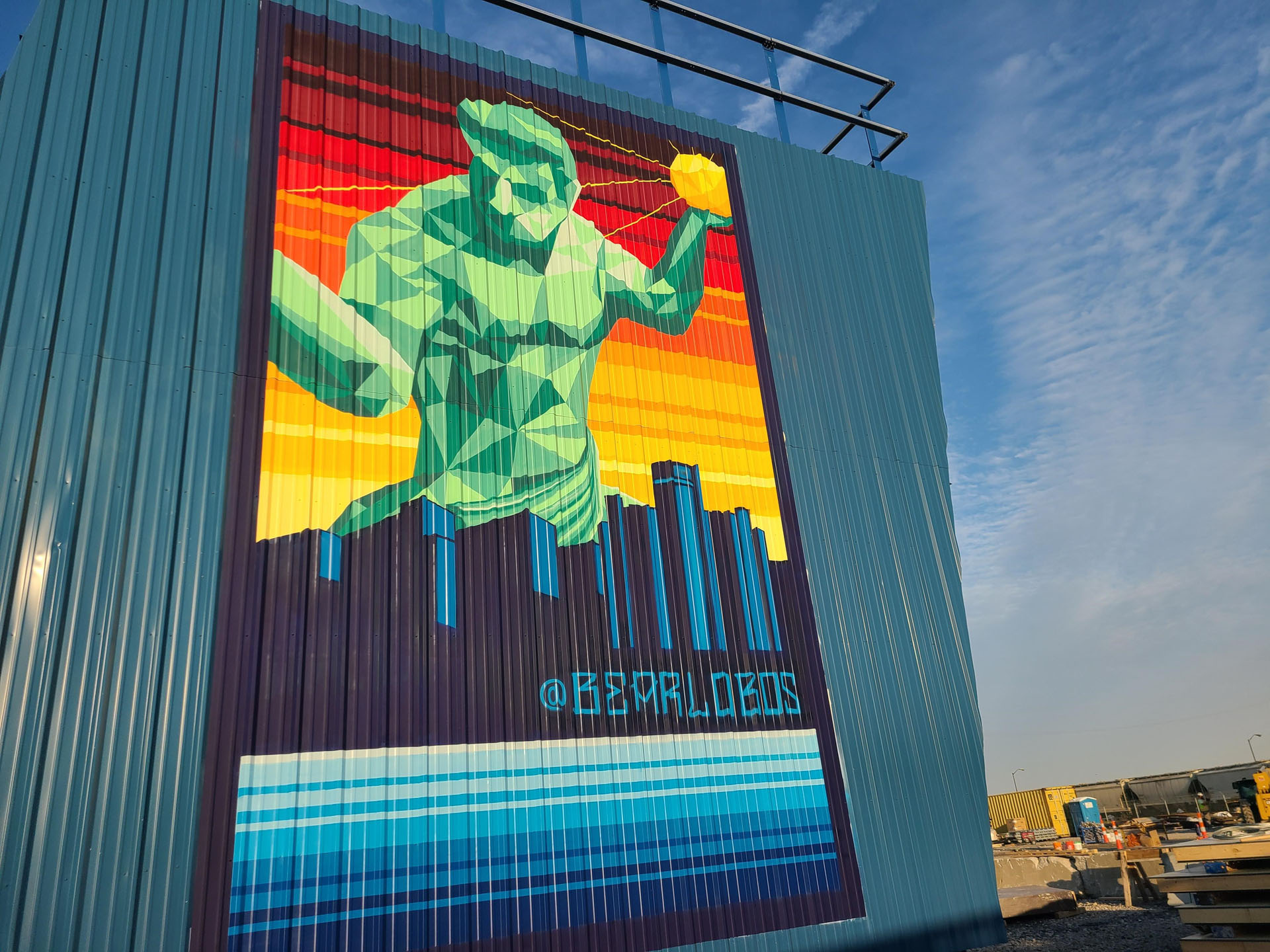 For the US side, the project team engaged local Detroit-based artist Roberto Villalobos to create designs reflective of the history and culture of the host community in Southwest Detroit.
For the US side, the project team engaged local Detroit-based artist Roberto Villalobos to create designs reflective of the history and culture of the host community in Southwest Detroit.
Villalobos, nicknamed “BearLobos”, was raised in Southwest Detroit, only minutes away from the construction site for the Gordie Howe International Bridge. He started his art career as a street artist. He then studied at Wayne State University and Columbia College in Chicago, an independent college specializing in art and media disciplines, where he cultivated an expertise in graphic design.
“I was very excited to be chosen since the neighbourhood is near and dear to my heart,” says Villalobos, who also recruited his son Diego, nicknamed “CubLobos”, to work on two images of the American flag as well as an image of an eagle and the Spirit of Detroit.
Villalobos says he used a geometrical approach in his two designs of the American flag to provide depth and movement. He also added silhouette images of people under the Stars and Stripes.
“They represent the iron workers in the region,” says Villalobos. “There’s also a difference between them to represent equality in the industry.”
As with the artwork on the Canadian side of the project, there is an image of an eagle and its feathers. Villalobos used different colours in that piece of artwork to honour the Mexican culture and heritage of the region.
Villalobos’ design of the Spirit of Detroit – the large bronze statue located in downtown Detroit – is done in similar fashion.
“It’s taking the same geometric concept and translating it into the statute,” says Villalobos. “I also injected the sunset and the waterfront in a stripe pattern that is taken from my Mexican culture, as a nod to the people who lived in Southwest Detroit.”
A Metallic Canvas
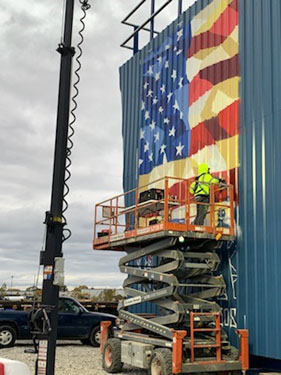 While Villalobos used a scis
While Villalobos used a scis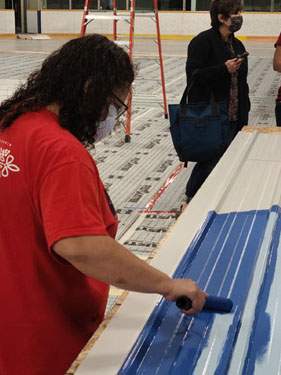 sor lift platform to sketch and paint his images directly on metal panels already placed on the formwork on the US bridge site, the artists from Walpole Island and Caldwell did something different.
sor lift platform to sketch and paint his images directly on metal panels already placed on the formwork on the US bridge site, the artists from Walpole Island and Caldwell did something different.
The panels were individually placed on the floor of the Walpole Island Community Cultural Centre for painting before the finished art pieces were transported to Windsor and the Canadian bridge site. The panels are so large that they took up most of the width of the arena.
Paul White says staff from Bridging North America, Windsor-Detroit Bridge Authority’s (WDBA) private-sector partner, used a computer program to resize the artists’ designs to fit the large panels.
Working at the community centre allowed the artists to involve more community members in the project. More than a dozen volunteers were recruited to help draw and paint the images.
“We had some very young children come and put a little dab of paint on the panels,” says White. “There is a lot of people who will be able to see these images and say they were involved in the painting and take ownership.”
“It’s so much more than what we had originally envisioned. It is really amazing,” adds White.
A Lasting Legacy
The Gordie Howe International Bridge will not only connect the economies of Canada and the United States, it will also connect two rich and diverse cultures.
Altiman is proud that her work and heritage will be part of such an iconic project.
“It’s a marvellous opportunity to teach people a little bit about who we are,” says Altiman. “I hope people will take the time to find out more about the paintings. It’s a tremendous teaching and learning process.”
White adds the work delivers a strong message.
“We may see things differently and we may interpret things a little bit different, but in the end, we all believe the same things. We believe in family and caring for people, animals and all living things on earth.”
“I hope it’s received well by everyone,” adds Villalobos.
The artwork will remain on the climbing structures for approximately two years before being repurposed once the bridge is complete.
Learn more about the artists and their work:
- News Release – Art Murals
- 9 Things to Know about Construction Site Art
- Artists’ Biographies
- Photo Gallery



